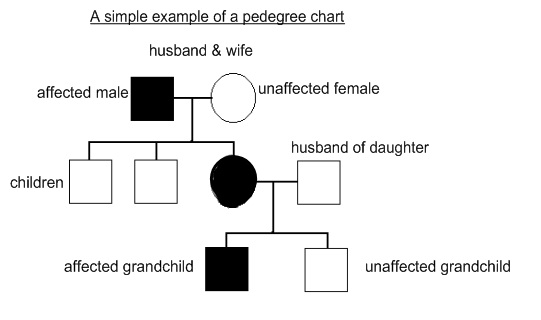Pedigree Chart & Phenotype Ratios
The World's Hairiest Teenager
The movie Teenwolf may just have been inspired by a real-life condition called hypertrichosis. There are just 40 sufferers in the world today.
This activity asks students to draw a pedigree chart of a family who suffer from this sex-linked genetic condition. Then they deduce the genotypes of the family members and finally predict the ratio of phenotypes in a future generation.
Guiding Questions
How do geneticists use family histories to draw pedigree charts?
How is it possible to use a pedigree chart to predict phenotype ratios in offspring?
Lesson starter
In 2010 the Guinness Book of World Records awarded Supatra Sasuphan from Thailand the dubious title of “The World’s Hairiest Teenager.” She suffers from hypertrichosis, a rare genetic condition which causes her to grow has long hair all over her face.
Supatra is one of just 40 sufferers in the world today. Another is Lili Aceves who, together with twenty three other members of her family, won the Guinness World Record for the hairiest family.
Lili's brother Chuy 'Wolf Boy' Aceves earns a living working in a circus in California.
They all have one thing in common, they have a rare sex linked genetic condition caused by a dominant allele on an X-chromosome.
Activity 1 - Pedigree chart analysis
Complete this worksheet: ![]() The worlds hairest teenager & Chuy the wolfman
The worlds hairest teenager & Chuy the wolfman
Alternative worksheet: The worlds Hairiest Teenager & chuy the wolfman - worksheet for students. (Word)
Extension activity
Answer the TOK style question below
"How do you think different societies across the world would judge a girl with hypertrichosis.
Where would be the best place to live, and why?"
Further information about Chuy the 'Wolf Boy' here ![]() Chuy El hombre lobo
Chuy El hombre lobo
Further information about the condition hypertrichosis.
Teachers notes
The Video lesson starter is a sympathetic look at the life of a girl who has this strange genetic condition where hair grows from the skin of the face. It should certainly catch the students' interest.
Further information about the condition hypertrichosis.
The main activity gives students some information about a family who also have the allele for hypertrichosis, and there are some IB style questions about their family tree on the worksheet.
Genetic notation, for X-linked genes is explained and students are asked to:
- Predict genotype and phenotype ratios
- Deduce genotypes and phenotypes in pedigree charts
Model answers for the hypertrichosis activities: werewolf allele activities model answers
There are a range of external links which can be used to extend students in a variety of ways.
These could be related to Aim 8 or to TOK if students were asked questions such as;
"How do you think different societies across the world would judge a girl with hypertrichosis. Where would be the best place to live, and why?"
Extension question on the Spanish royal family:![]() Pedigree chart question (Spanish royal family)
Pedigree chart question (Spanish royal family)
Vocabulary list
Carrier
Genotype
Pedigree chart
Phenotype
Sex-linked
Sufferer

 IB Docs (2) Team
IB Docs (2) Team

